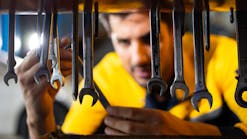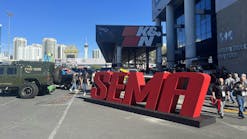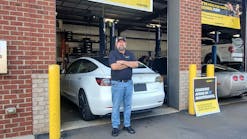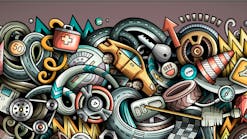The annual Women in Auto Care Leadership Conference took place this year in Salt Lake City, Utah. It was held Feb. 20 through Feb. 22, and the theme for this year's event was Innovate & Impact. The conference brought together people and ideas from representatives all over the aftermarket. Women in Auto Care is a community of the Auto Care Association.
There were many topics presented for consideration, from tips on battling burnout to learning how to confidently celebrate professional wins and successes. While some sessions were more broadly about professional development, others applied directly to happenings within the automotive aftermarket space.
One panel titled "Unpacking Industry Trends" brought some big-picture talking points to the forefront. NOLN was in attendance and outlined some of the components that made up this far-spanning conversation.
The panel was moderated by Meagan Moody of ZF Aftermarket. Areas of discussion included electronic vehicles, ADAS, connected features, and Right to Repair. The differing areas of expertise from panelists allowed trends to be looked at from the heavy-duty, supplier, and shop owner perspective.
Panel participants included HDA Truck Pride President and CEO Tina Hubbard, Ervine's Auto Repair & Grand Rapids Hybrid and EV Owner Jamie Carlson, and Clarios Executive Director of Marketing, Strategy, and Technical Services Rebecca Conway.
Electronic Vehicles
Moody remarked on shifts in the industry in relation to EVs, and asked Carlson about what shops can do to handle these types of vehicles. Carlson described the key points of education and having technicians who are not only interested in working on the vehicles, but who are capable of the task.
Conway mentioned, in terms of EV trends, that vehicles have the potential to change more in the next decade than they have in the last 100 years. She also pointed to the idea of the EV lifecycle, begging the question: What exactly will that lifecycle look like?
While there remain some unknowns surrounding EVs in the aftermarket, the panel discussion did showcase multiple slides of data in relation to this topic during the conversation.
Some of this data included insights from the Deloitte 2024 U.S. Automotive Consumer Study, which highlighted a 67% response in favor of an internal combustion engine for a consumer's next vehicle. Additionally, 62% of respondents stated concern over the "end-to-end environmental impact of an EV battery." Interestingly, this study reported 17% of respondents have no interest in ever purchasing a BEV.
Elements of ADAS
When the conversation moved to ADAS, there was strong representation from the audience, in terms of hands raised, of people who at least had experience driving a vehicle at Level 2 autonomy. This category includes elements such as lane assist and braking assistance technologies.
On the heavy-duty side, Hubbard remarked that while she has not driven a commercial vehicle equipped with ADAS, the components of ADAS are nonetheless helpful in concept, especially considering situations like vehicle crashes. A crash with a semi-truck, for example, is ultimately more costly—and ADAS could be critical in terms of safety going forward.
Conway said, from her perspective at Clarios, preparing to power these kinds of vehicles comes from an understanding that batteries once used simply to power the vehicle are now "safety critical."
Moody noted that while ADAS can support safer driving, there is still a larger concern about the control aspect—to which panelists agreed. Another important consideration in ADAS is the person driving the vehicle. Taking a moment to speak to the potential perspective of a customer such as this, Carlson said concerns for that customer surrounding ADAS-related repairs may revolve around situations when the individual takes their car into a shop after a collision, and that the ADAS could potentially not be correctly calibrated.
Right to Repair and Beyond
The ever-pertinent topic of Right to Repair was also tied into the panel discussion. All panelists agreed on the necessity of Right to Repair as a concept.
In response to being asked about the role of connected features in the heavy-duty sector, Hubbard spoke to how these features make the concept of Right to Repair all the more important.
For example, she talked about the conundrum of not having a choice where your vehicle breaks down. If a truck were to break down in the middle of nowhere, a tow could be expensive. Access to options in these situations could be essential.
Carlson said that while her shop has not had issues getting ahold of the repair information they need, she knows of shops that have. As to what she's seen at her shop, she shared it can be more expensive for drivers to take their vehicles to the dealership, and the dealerships may not be able to handle it—she has had drivers bring their hybrids from the dealership over to her shop.
At the end of the panel discussion, themes of education, adaptability, and change were echoed when it comes to facing these kinds of trends across the industry. As elements of the aftermarket shift, it's panels such as this one that show the importance of conversation and understanding of the topics at hand.





